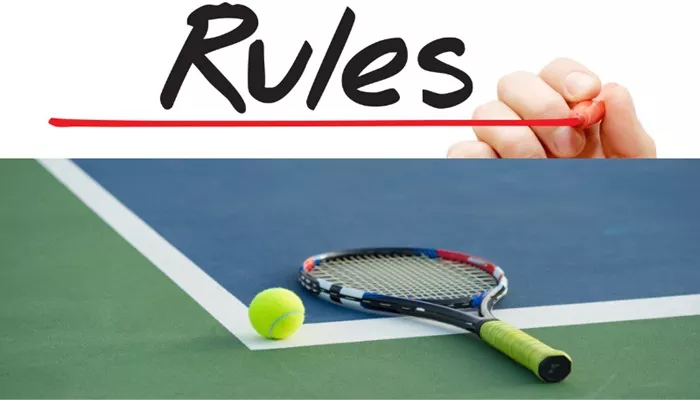Tennis is a sport governed by a structured set of rules that ensure fair play and competitive integrity. One of the most frequently referenced concepts in tennis is the “10 Rule.” While there is no single universal “10 Rule” explicitly defined in the official rulebook, the phrase is often used in different contexts, including junior tennis regulations, tiebreaker formats, and match-play guidelines. This article explores the various applications of the “10 Rule” in tennis and outlines ten key rules every player should know.
Understanding The “10 Rule” in Tennis
The “10 Rule” is most commonly associated with the following aspects of tennis:
10-Point Tiebreaker: A format used in deciding sets instead of playing a full third set.
10-and-Under Tennis: A specialized format for young players to develop skills under modified rules.
The 10-Second Rule: Governs how much time a player has before serving.
10 Basic Rules of Tennis: Essential rules that all players should know.
To provide a complete understanding, this article will outline the 10 most fundamental rules of tennis that all players, from beginners to professionals, must follow.
What Is The 10 Rule in Tennis?
1. The 10-Point Tiebreak Rule
In some matches, instead of playing a full third set, players compete in a 10-point tiebreak. The rules include:
The first player to reach 10 points with at least a 2-point margin wins.
Players switch sides after every 6 points.
A player must win at least 10-8, 11-9, etc. for the match to be decided.
This rule is commonly used in doubles matches and some professional tournaments to shorten match duration.
2. The 10-and-Under Tennis Rule
This rule applies to young players under 10 years old, using modified conditions to enhance skill development. Key elements include:
Smaller courts (36 feet for beginners, 60 feet for advanced players).
Lower-compression balls that bounce lower and move slower.
Shorter racquets (19-25 inches) for better control.
Modified scoring (best of 3 short sets or first to 4 games per set).
The purpose is to make tennis more accessible to younger players.
3. The 10-Second Rule for Serving
In professional tennis, players have 25 seconds between points, but in some junior and club competitions, a 10-second rule is applied to speed up the game. The rule states:
The server must start the service motion within 10 seconds after the score is announced.
Failure to comply results in a warning, followed by a fault penalty.
This keeps the game moving efficiently and prevents unnecessary delays.
4. The Ball Must Land Within the Court Boundaries
A ball is considered in play only if it lands within the designated court lines. If it touches any part of the boundary line, it is still considered in.
If a ball lands outside the lines, it is called out, and the point is awarded to the opponent.
Players can challenge line calls using the Hawk-Eye system in professional matches.
5. The Serve Must Land in the Service Box
For a legal serve:
The ball must land diagonally across in the opponent’s service box.
A let serve is replayed if the ball touches the net but lands in the correct service box.
If the server misses twice, it results in a double fault, awarding the point to the opponent.
6. Players Cannot Touch the Net During a Point
Players must avoid any contact with the net while the ball is in play:
Touching the net with a racquet, body, or clothing results in an immediate loss of the point.
After the ball is out of play, players can cross the net for sportsmanship gestures.
7. The Ball Must Be Hit Before It Bounces Twice
A player must return the ball before it bounces twice on their side of the court. If:
The ball bounces twice, the opponent wins the point.
The ball bounces once, the player must hit it back to continue the rally.
8. Players Must Wait for the Ball to Cross the Net
A player cannot hit the ball before it crosses the net to their side. The rules state:
The player must let the ball reach their side before striking it.
The only exception is if the ball has spun back to the opponent’s side due to extreme backspin.
9. No Hindrance or Distractions Allowed
Players must not cause distractions during play. The hindrance rule includes:
Making loud noises or shouting to distract an opponent.
Deliberately delaying the game to disrupt an opponent’s rhythm.
Any player causing hindrance loses the point.
10. Tie-Break Rules and Scoring System
If a set reaches 6-6, a tie-breaker determines the winner:
The first player to reach 7 points (with a 2-point margin) wins.
In a 10-point tiebreak (as mentioned earlier), players must reach 10 points instead of 7.
Players switch sides after every 6 points.
Tie-breakers ensure a decisive conclusion to a set.
Conclusion
The “10 Rule” in tennis applies to various aspects of the game, including tie-break formats, youth tennis modifications, serving regulations, and fundamental game rules. Understanding these essential tennis rules enhances gameplay, ensures fair competition, and helps players develop a strategic approach to matches. Whether you’re a beginner or an experienced competitor, mastering these rules is crucial for success on the court.

